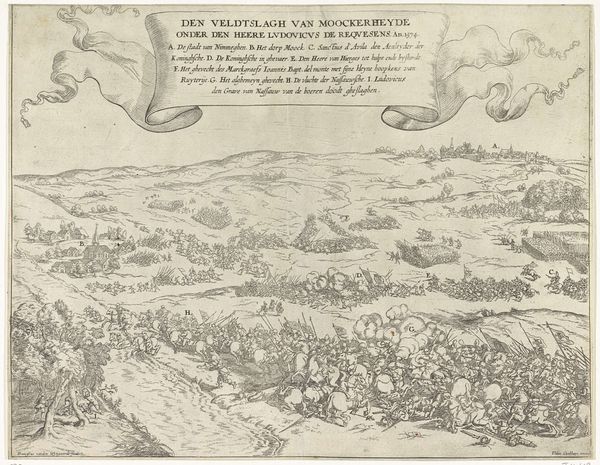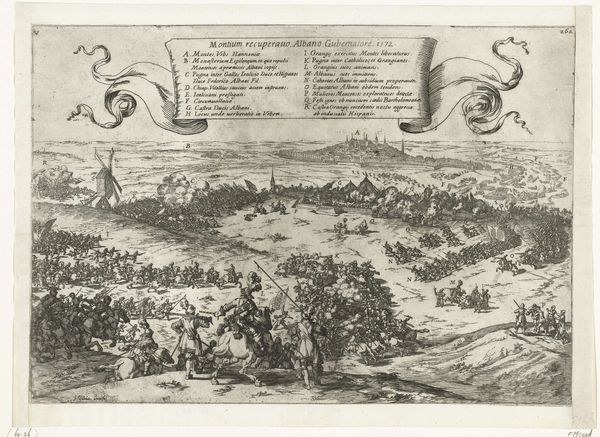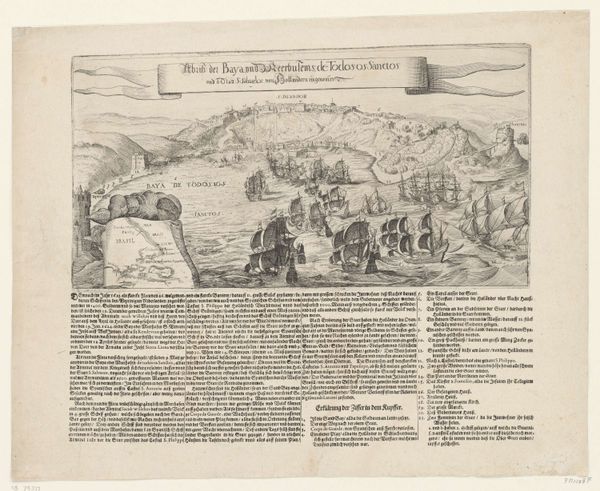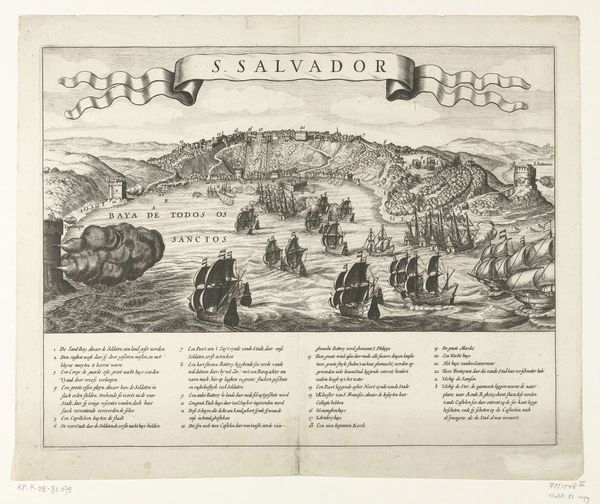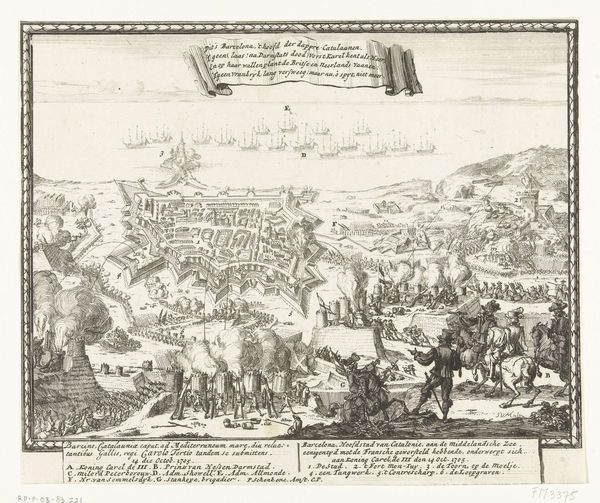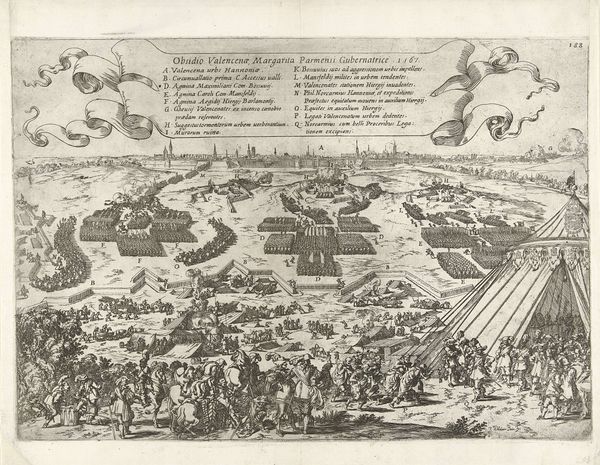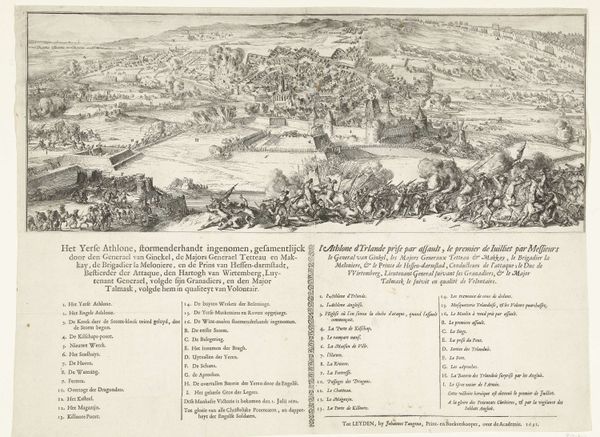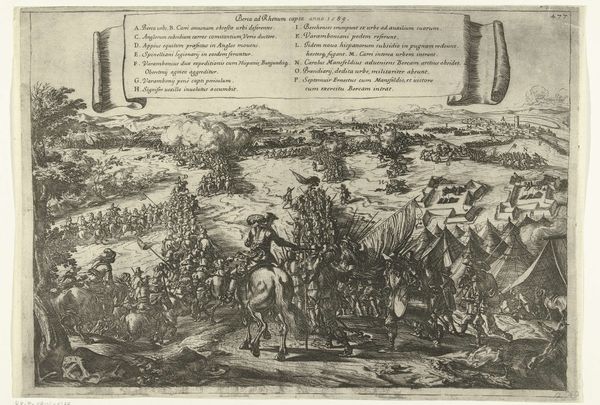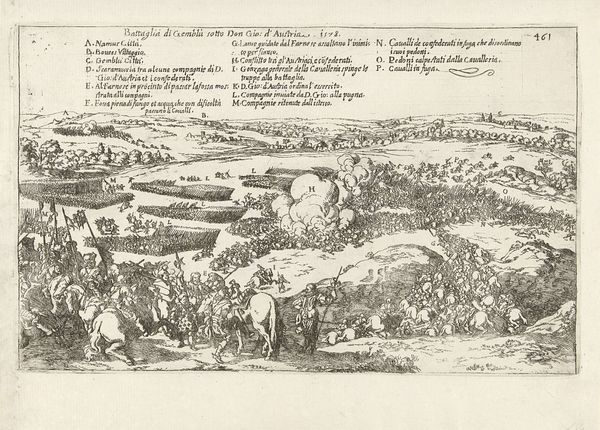
Derde plaat van de watersnood na dijkdoorbraken bij de grote rivieren, 1740-1741 1741
0:00
0:00
print, engraving
#
baroque
#
dutch-golden-age
# print
#
old engraving style
#
hand drawn type
#
hand-drawn typeface
#
cityscape
#
history-painting
#
engraving
Dimensions: height 560 mm, width 511 mm
Copyright: Rijks Museum: Open Domain
Curator: This engraving, “Derde plaat van de watersnood na dijkdoorbraken bij de grote rivieren, 1740-1741,” by Jan (II) Smit, details the aftermath of severe flooding following dike breaches in the major rivers. Editor: My first impression is the density of information! It feels overwhelming at first glance—so much text integrated with the imagery. There is almost a frenetic energy, mirroring the chaotic reality it depicts. Curator: Precisely. Smit’s work serves not just as a visual record, but also a commentary on societal response and vulnerability. The visual breakdown into sectors allows examination of individual crises of identity. Editor: Focusing on materials, you know this would've been created through a detailed, labor-intensive engraving process. Consider the time investment of the many artists who worked diligently together to produce what looks like a newsprint of sorts at the time! This points toward a specific form of historical awareness through reproducible formats accessible to those in proximity. Curator: It embodies a certain Dutch Golden Age sensibility but it doesn't quite hit the opulence one expects. There’s a practical urgency that shifts it from celebration to observation and analysis. How does the print function as a political object as a critique? How does the scale allow the working class and public accessibility, making visible and concrete the experience of collective crisis and how they affect everyday life? Editor: The distribution and subsequent consumption, and that element of craft. Do we fully account for who produces art at any given time? Were working-class creators recognized for documenting labor involved in response? Where are women depicted, both workers and experiencers? How does Smit integrate all these people as subject matter? Curator: Those are critical interventions. It shifts our view to the intersection of ecological disaster and political infrastructure, drawing out lines between power structures and individuals. Editor: In the act of both creating and analyzing, we uncover those connections as if excavating meaning within those in-betweens: labor, distribution and consumption as historical reflection... it changes everything. Curator: It calls to mind how even ostensibly descriptive art carries subjective weight and functions to empower its subject.
Comments
No comments
Be the first to comment and join the conversation on the ultimate creative platform.
